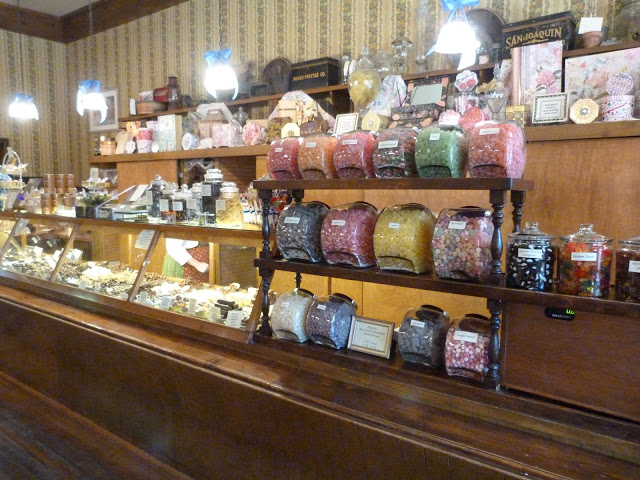There're a lot of apocryphal tales of puttanesca sauce having been created by Italian prostitutes, who used the delightful cooking smells of this dish to lure in customers. While it's a cute, slightly risque story, it's most likely a bunch of hooey, from what I've read - but who really cares, because this sauce is spicy and salty and wonderful. Whores or no whores, this stuff is good! (there's a phrase I don't get to say very often...) If your nose isn't running by the time you've finished dinner, you're doing it wrong.
Pasta alla Puttanesca
1/2 pound pasta
1/8 cup extra virgin olive oil
4 cloves of garlic, minced
1/2 yellow onion, minced
3 anchovy filets, cut into bits (I used anchovy paste, but filets are better)
1/2 teaspoon red pepper flakes
1 tablespoon tomato paste
2 tablespoons capers, well drained
1/3 cup Kalamata olives, sliced
1 14.5-oz can pureed or diced tomatoes
Bring a pot of water to a boil for the pasta. When the water reaches a boil, pour the olive oil into a big pan with a lid (large enough to accommodate the cooked pasta). Put the onion, garlic, and anchovies
into the cold oil and bring the heat up to medium-high. When it starts
sizzling stir it all around. Garlic can burn quickly, so watch carefully; push the garlic/onion/anchovy mix to one half of the skillet, and in the other half shake
in the red pepper flakes to taste and add the tomato paste. Stir the
tomato paste around in its spot for a moment and then stir
everything in the skillet all together. Add the capers and olives and give it a stir, and finally, add the tomatoes. Bring the sauce to a boil, then cover and
lower the heat to low so it simmers.
Boil the pasta. While it's cooking, check the sauce and adjust seasoning if needed - add fresh ground black pepper if you like. Now let it cook with
the lid off so it thickens for the remaining time it takes for the pasta
to cook.
When the pasta is al dente, drain it and add it to the sauce. Stir well to coat. Serve with lots of Parmesan cheese!








































